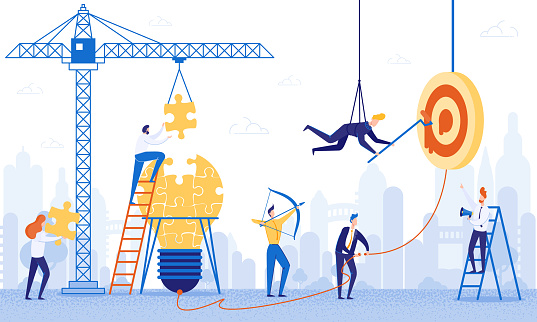
The following post is an excerpt taken from the B2B Marketing for Executives: A Deep Dive on the Big Rocks First white paper that dives into the key foundational pieces (i.e. the ‘Big Rocks’) of B2B Marketing, including marketing strategy, messaging, lead generation and more!
B2B businesses cannot thrive and grow without a reliable, well-oiled lead and demand generation engine in place. Two key ingredients of this effort are content marketing and marketing automation. But first, understand that it’s important to evaluate your lead generation efforts at a strategic level in the context of the B2B buyer’s journey.
So, how can you create a B2B lead generation engine that will position your marketing team to generate high quality leads and drive revenue? Let’s get into it!
Identify the Lead Generation Opportunities in the Buyer’s Journey
A critical step in B2B lead generation is to identify the steps in your buyer’s journey and strategically create targeted lead gen campaigns at each stage of the journey.
Here’s a visual of how our friends at HubSpot frame it.
Identify: The ‘Identify’ stage is the point where you begin to pique your audience’s interest to convert them from complete strangers to potential leads. Your web visitors may be learning about your business through blog posts, gated thought leadership content (via web forms) and more.
Connect: During the ‘Connect’ stage, your audience knows what your business does and is considering your product/service. You’ll want to continue offering various types of web-form gated content such as eBooks, white papers, how-to guides, templates or webinars that are relevant to your product/services. This is also the ideal point to begin nurturing your leads with email and content marketing.
As your leads continue to engage with and download your content, you’ll further push them along the buyer’s journey and converting them in to higher qualified leads.
Explore: At the ‘Explore’ stage, you’ve hooked your audience in as qualified leads but now need to further deepen their interest in your product/service to convert them into an opportunity. Focus on nurturing your leads based on the content they’ve downloaded and buyer journey stage. Deliver personalized, relevant content via email marketing campaigns with the goal of building trust and staying top of mind.
Advise: At the ‘Advise’ stage, you’ve reached the point in the journey where your opportunities are ready to become customers. Nice! You’re finished right? Not quite. Now is the time to ensure you deliver an excellent customer experience by continuing to provide relevant resources and content through a newsletter or nurture campaign geared towards your customers. Make sure you check in periodically on your customers’ experience with your product or service too. You can do this via check-in calls or through client satisfaction surveys. This will help further establish your organization as thought leaders, show your customers you truly care about their needs and help turn customers into evangelists.
By strategically considering your B2B buyer’s journey, you can better identify what areas you need to address in your lead generation efforts. For example, you might see that there is an opportunity to turn your loyal customer base into brand champions and promoters of your product/services, giving you another channel to generate high-quality inbound leads.
Key Questions to Consider for B2B Lead Generation
Now that you’ve determined what your buyer’s journey will look like, consider the following strategic questions when evaluating the power of your lead generation efforts:
- Do we overly rely on repeat and referral business and not enough on inbound lead generation?
- Do we engage at the same level of effectiveness at each stage of the buyer’s journey?
- Do our internal processes efficiently move from one stage of the buyer’s journey to the next?
- Do we have SMART lead generation goals in place and is performance-to-goal regularly reviewed?
- Do our sales and marketing professionals share a common definition of what a lead is and what its various stages are?
Agreeing on answers to these strategic questions is foundational to building an effective lead generation engine. With this in place, you can then decide how you’re going to go about generating the leads you need to grow your business and what tools you’ll need to do so efficiently.

There are no comments